
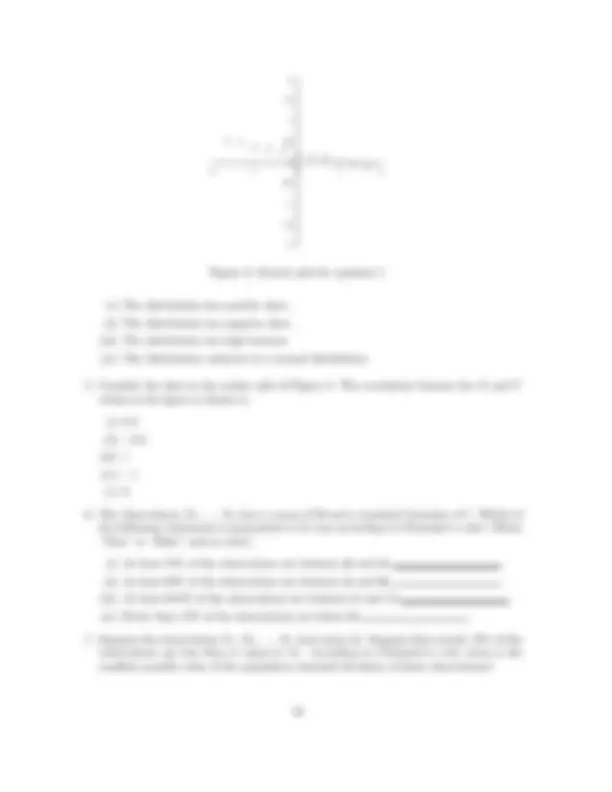
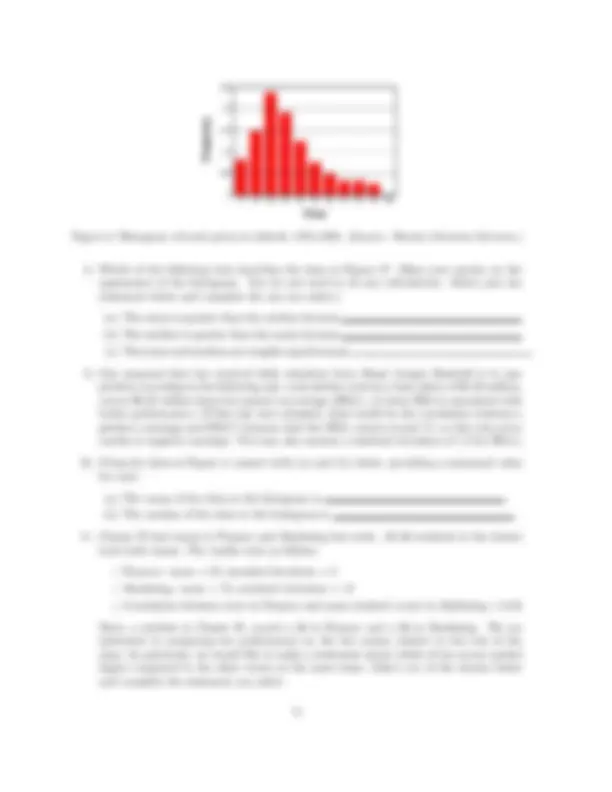
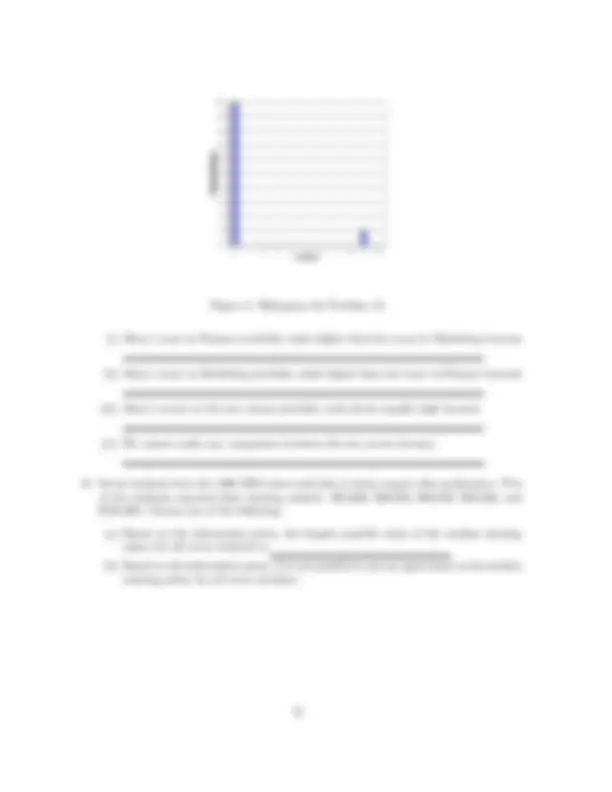

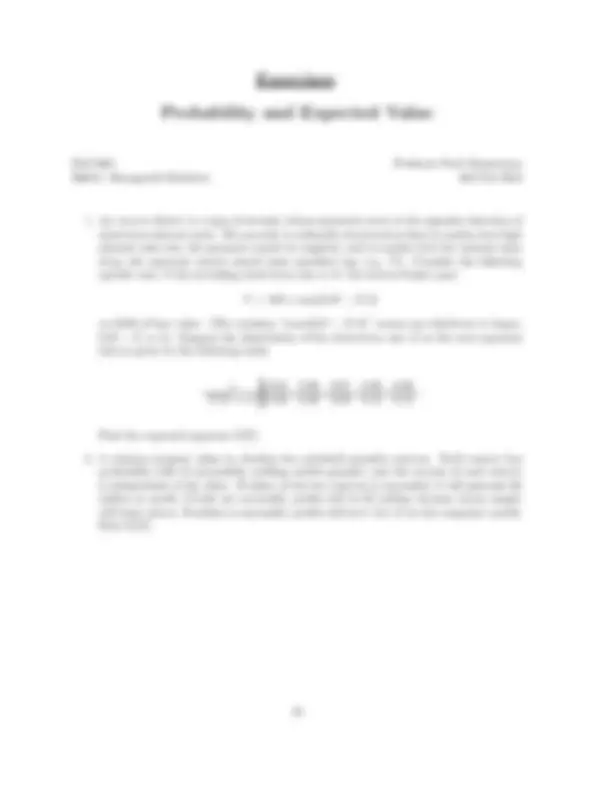
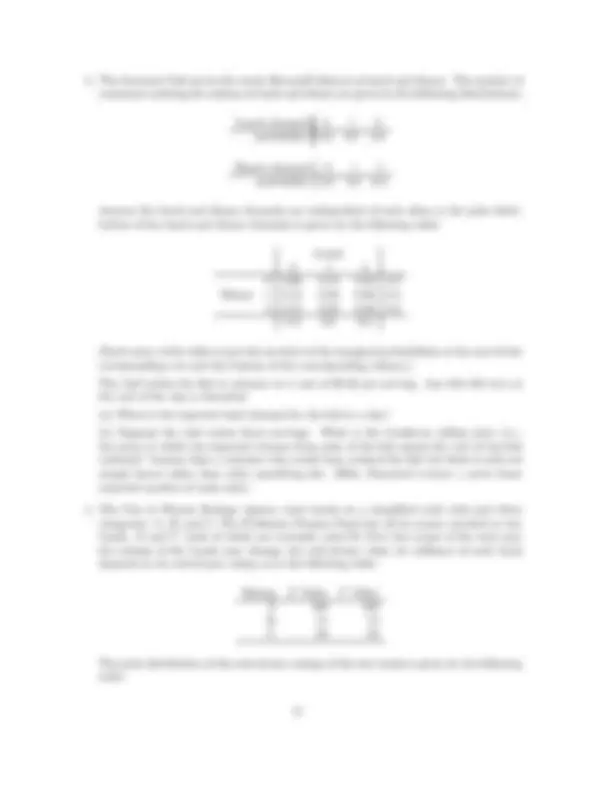
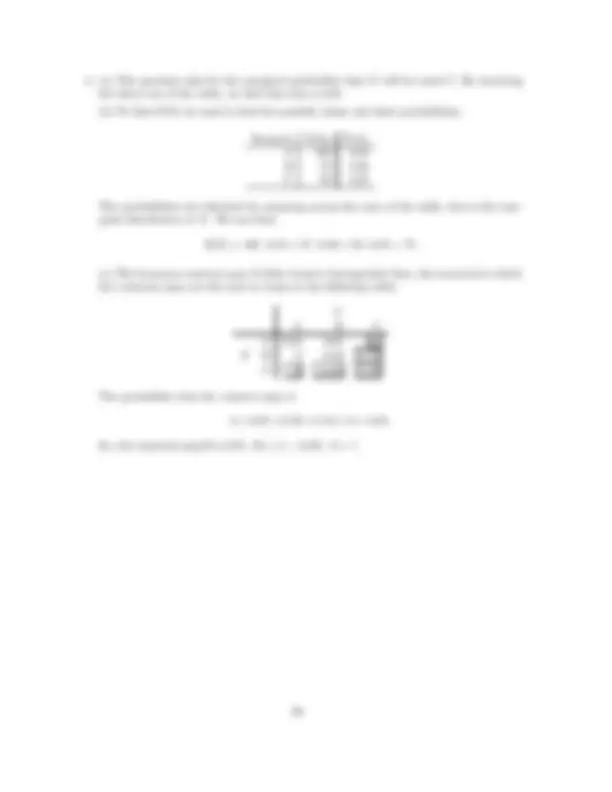
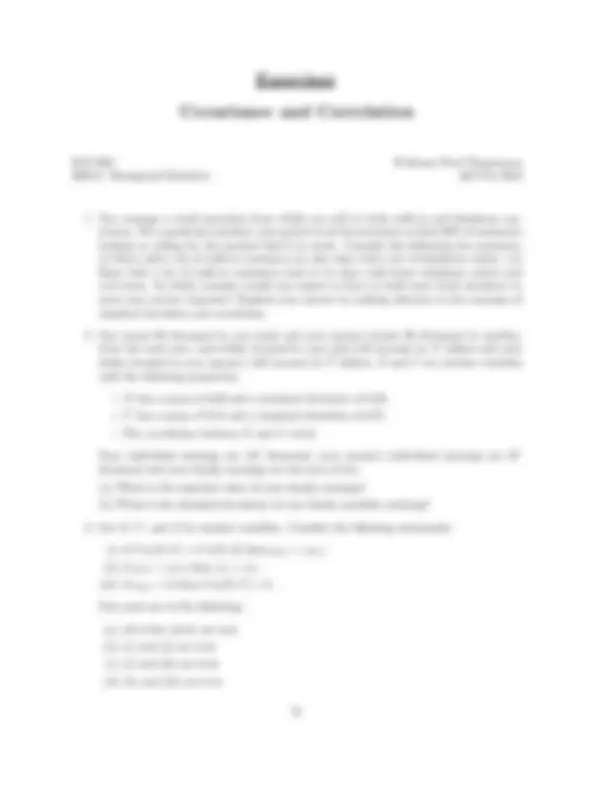
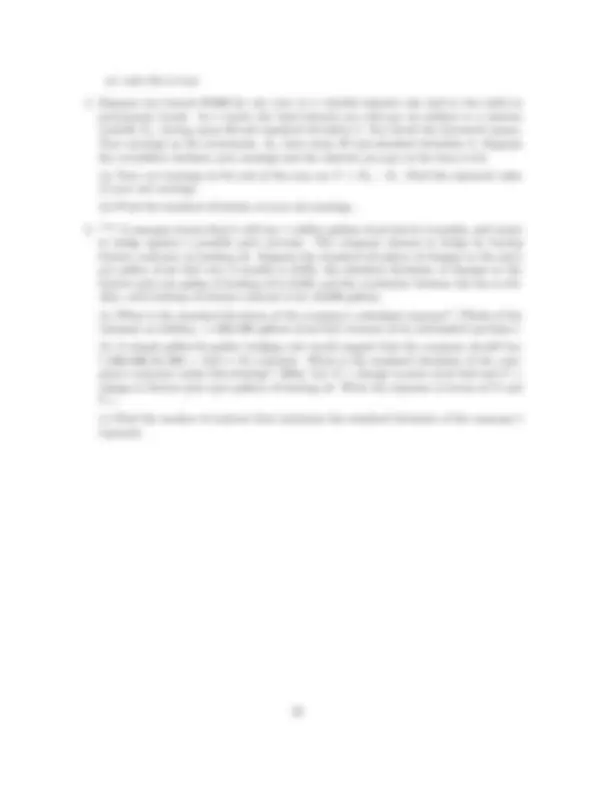
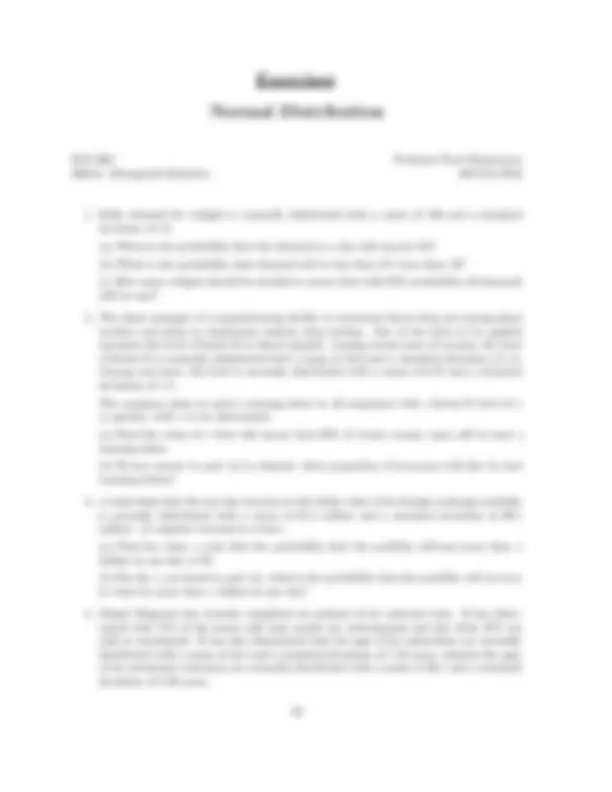
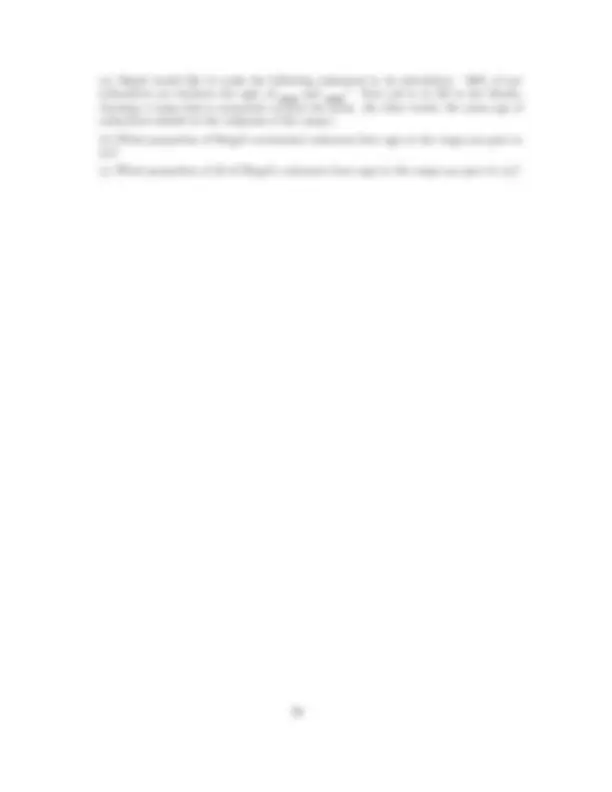
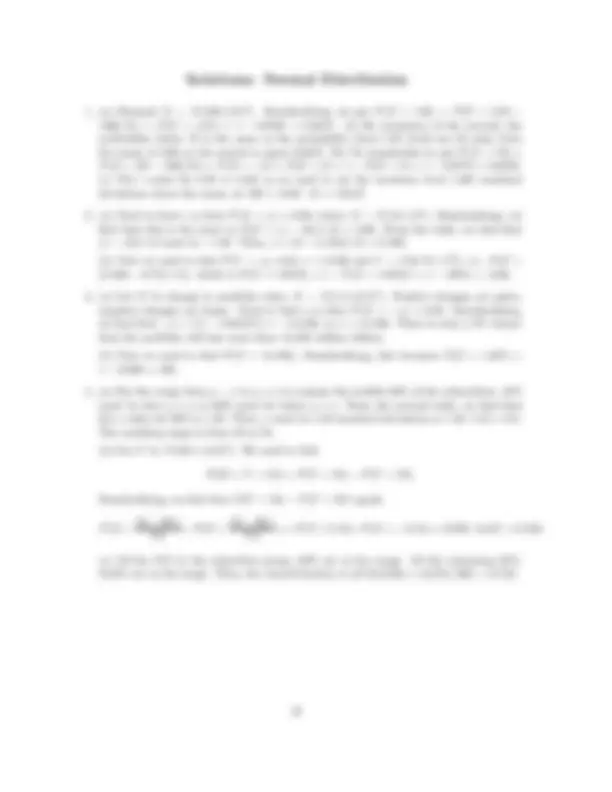
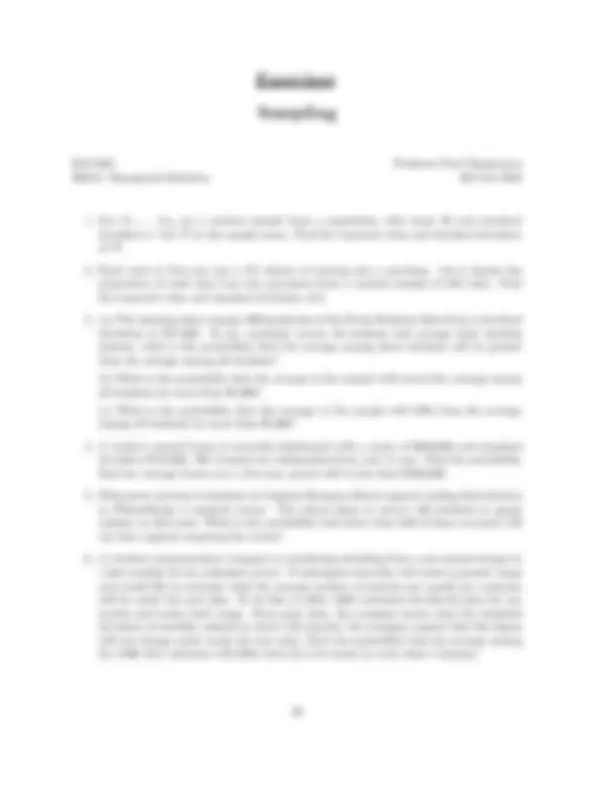
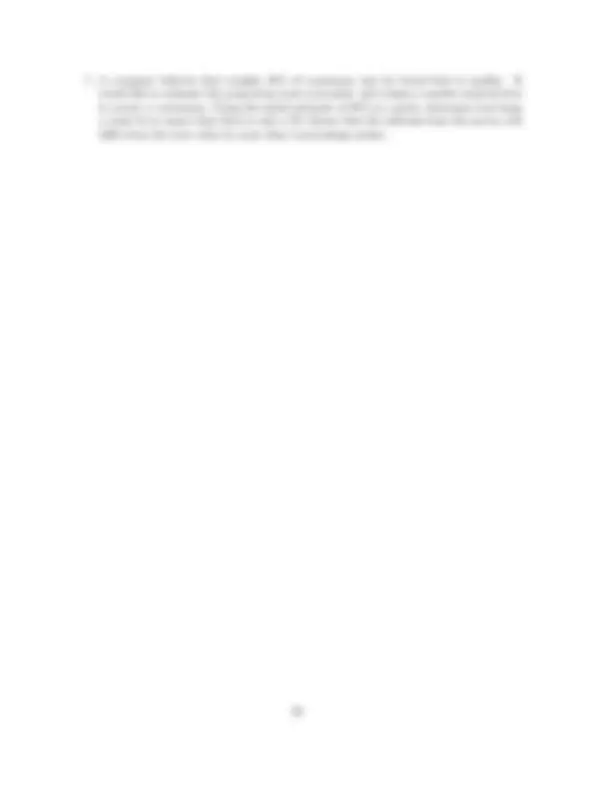
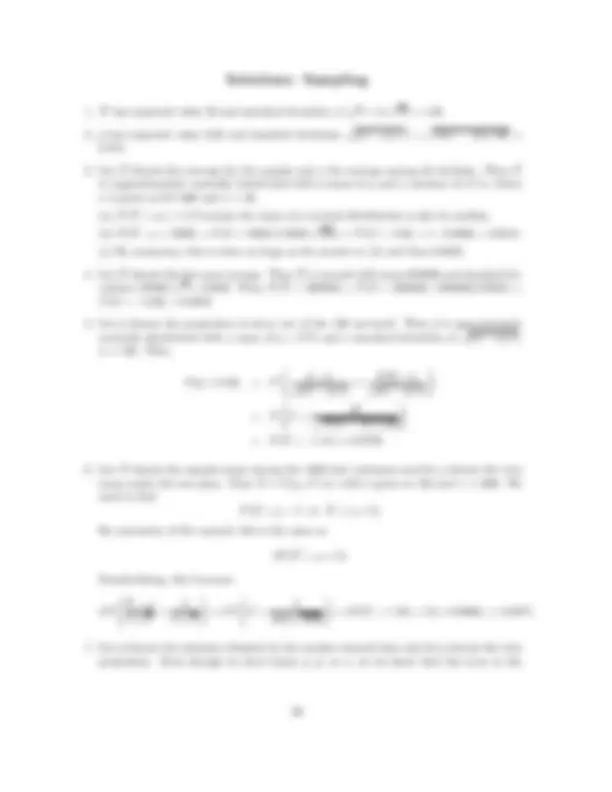
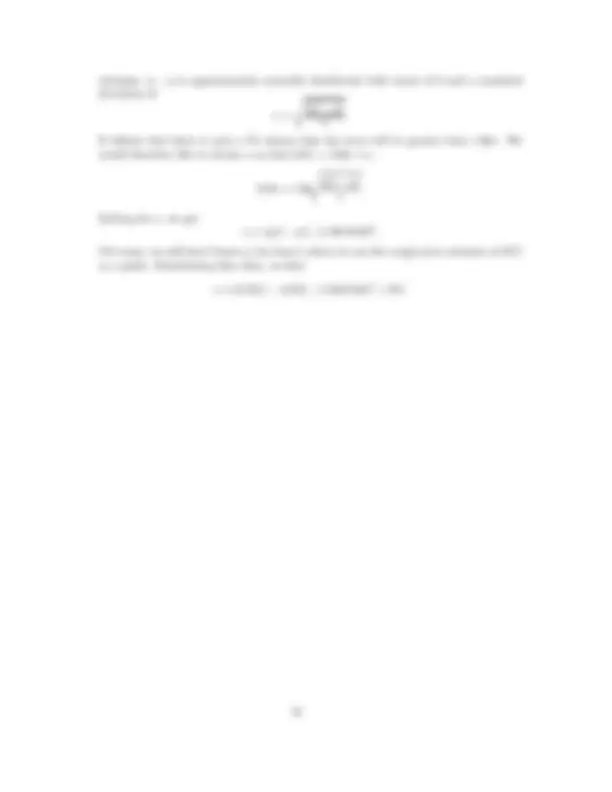
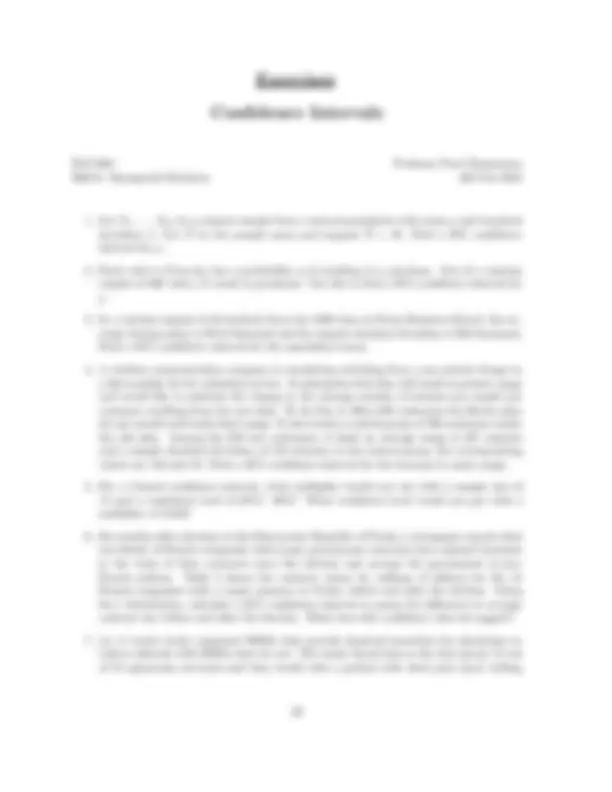
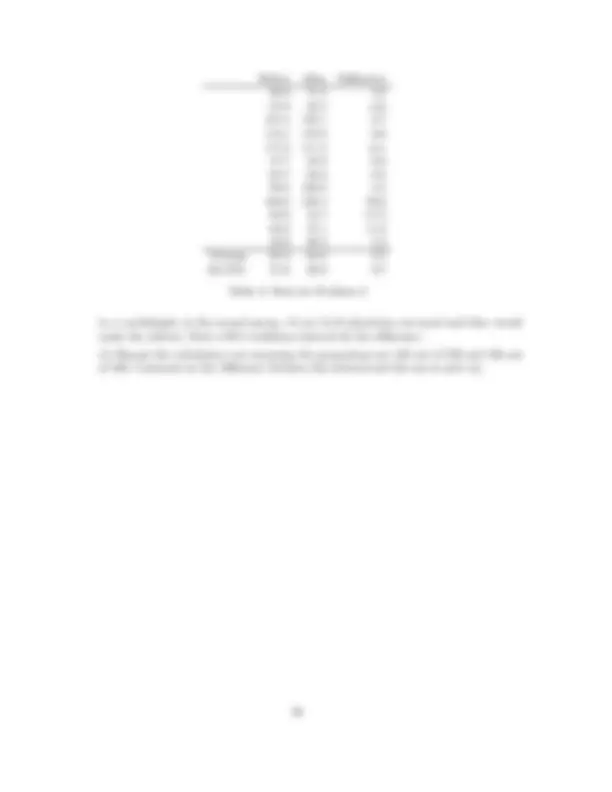
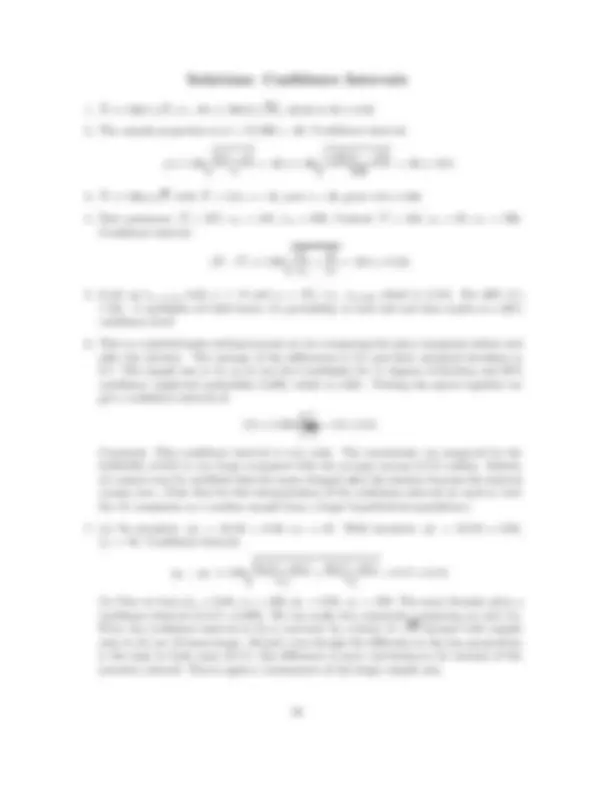
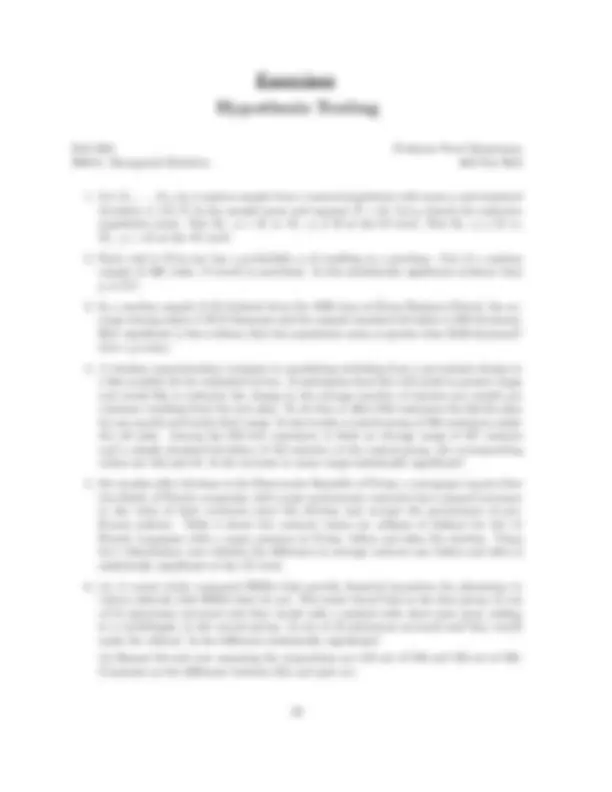
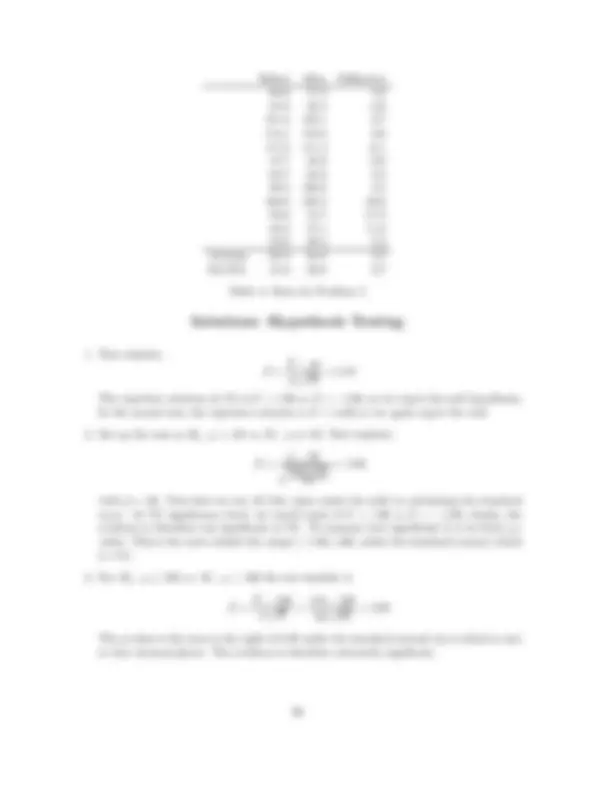
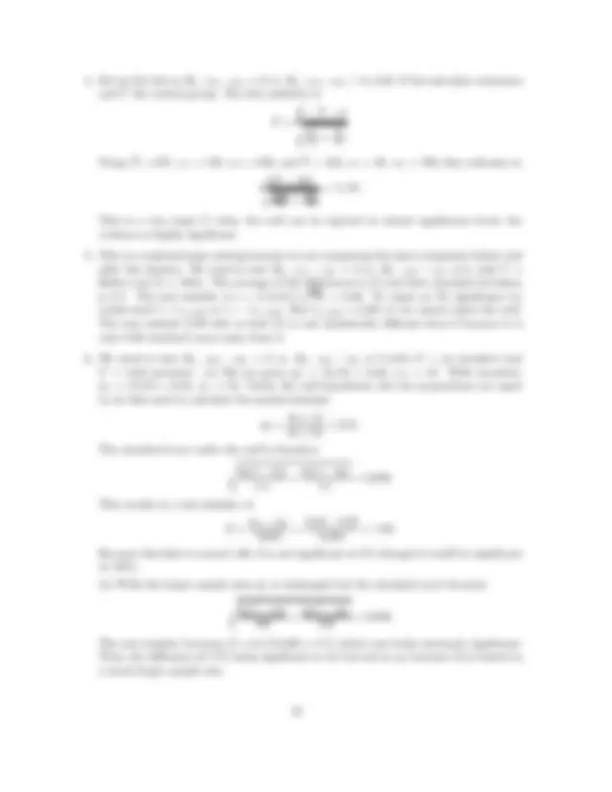
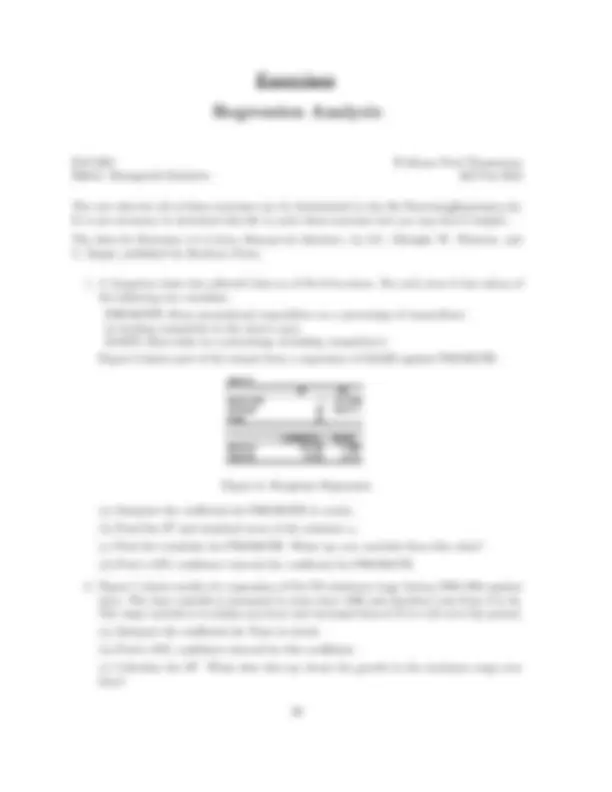
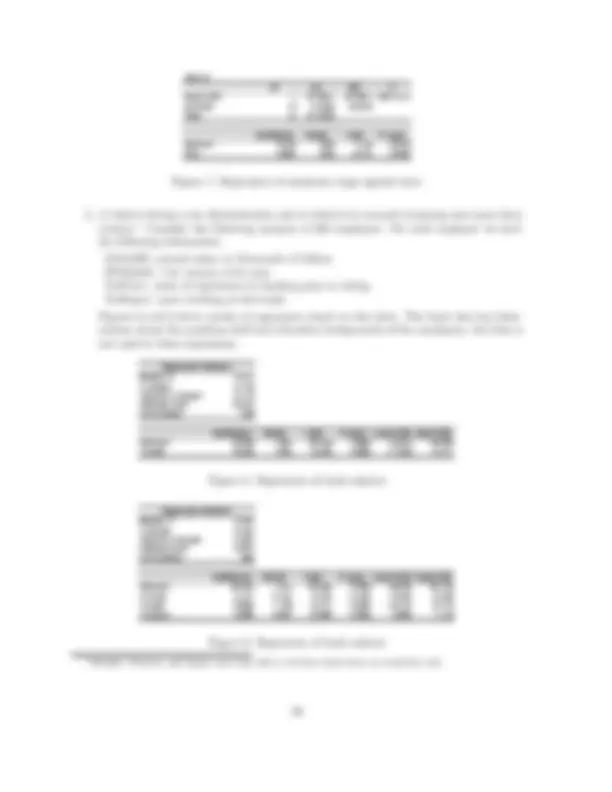
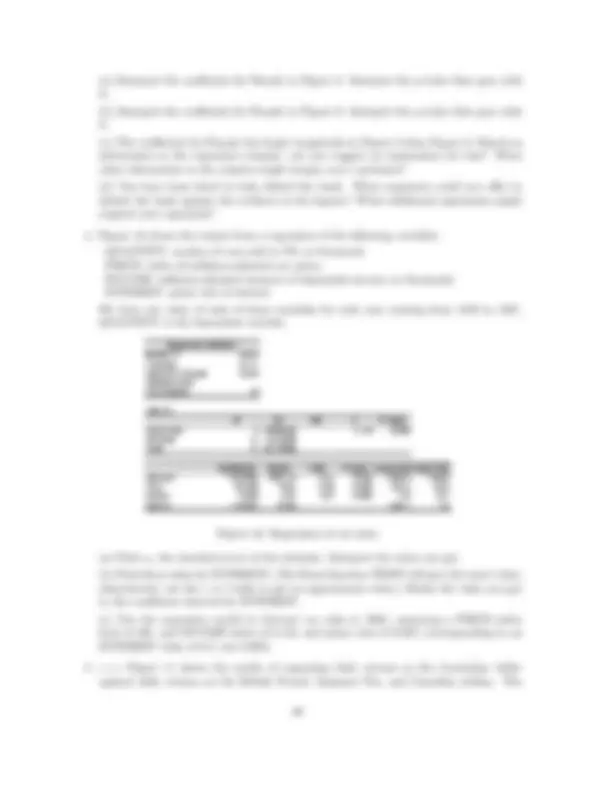
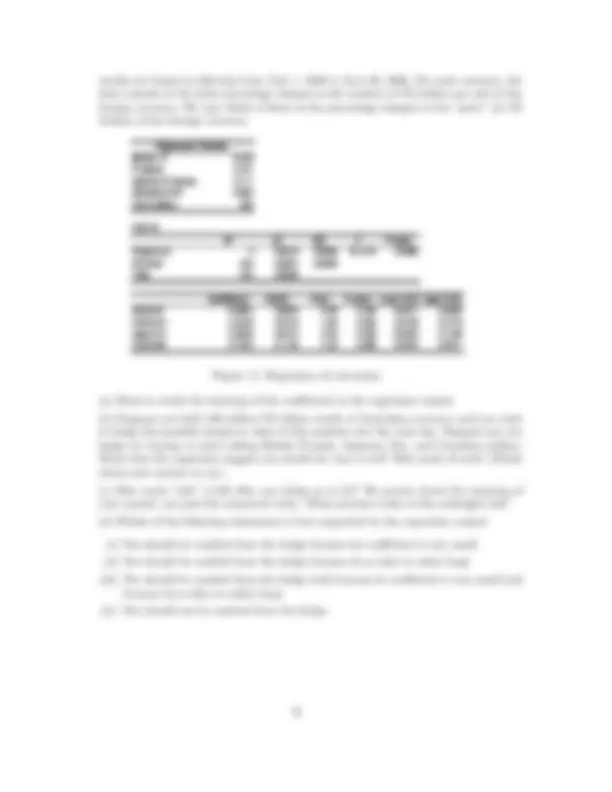

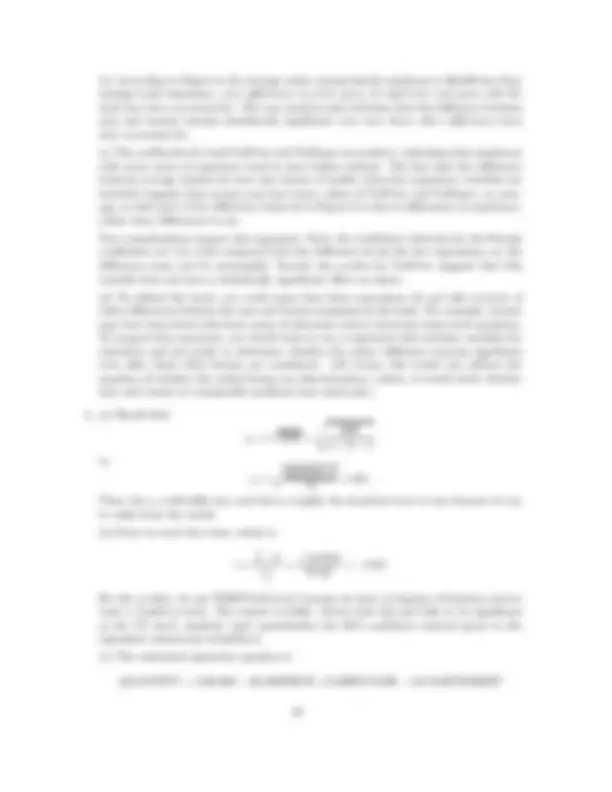
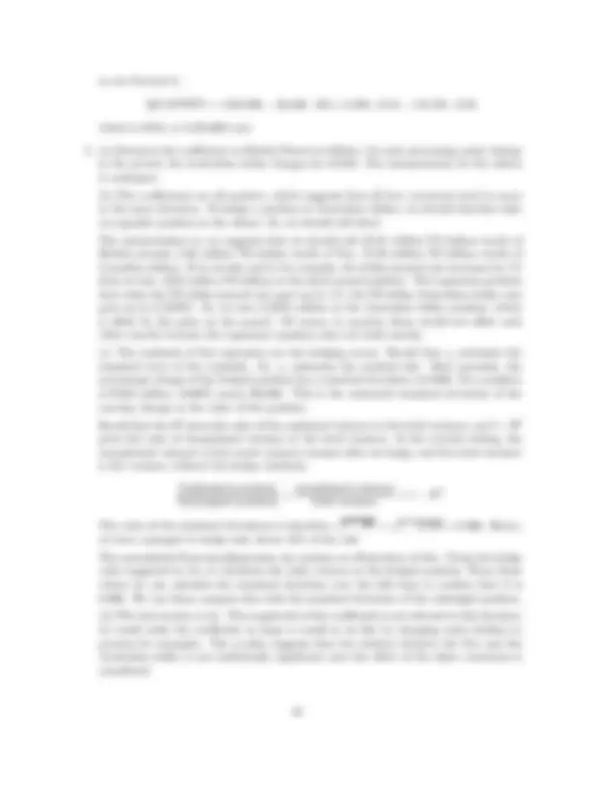


Study with the several resources on Docsity

Earn points by helping other students or get them with a premium plan


Prepare for your exams
Study with the several resources on Docsity

Earn points to download
Earn points by helping other students or get them with a premium plan
Community
Ask the community for help and clear up your study doubts
Discover the best universities in your country according to Docsity users
Free resources
Download our free guides on studying techniques, anxiety management strategies, and thesis advice from Docsity tutors
Exercises and solutions for a Managerial Statistics course taught by Professor Paul Glasserman in Fall 2001. The exercises cover topics such as descriptive statistics, probability, sampling, hypothesis testing, and regression analysis. The solutions provide step-by-step calculations and explanations. histograms and data sets for some of the exercises. It is a useful resource for students studying Managerial Statistics or related fields.
Typology: Study notes
1 / 37

This page cannot be seen from the preview
Don't miss anything!






























Fall 2001 Professor Paul Glasserman B6014: Managerial Statistics 403 Uris Hall
Fall 2001 Professor Paul Glasserman B6014: Managerial Statistics 403 Uris Hall
0
1
2
3
4
5
6
7
8
0 1 2 3 4 5 6 7 Values
Figure 1: Histogram for Problem 1
1.Find the median of the data in Figure 1.
2.Find the standard deviation of the data in Figure 1.
3.Five students from the 1999 MBA class took jobs in rocket science after graduation.Four of these students reported their starting salaries: $95,000, $106,000, $106,000, $118,000. The fifth student did not report a starting salary.Choose one of the following:
(a) The median starting salary for all five students could be anywhere between $95, and $118,000. (b) The median starting salary for all five students is $106,000. (c) The median starting salary for all five students is $106,500. (d) The median starting salary for all five students could be greater than $118,000.
4.The observations X 1 ,... , Xn have a mean of 52, a median of 52.1, and a standard deviation of 7.Eight percent of the observation are greater than 66; 7.9% of the observations are below 38.Based on this information, which of the following statements best describes the data?
(^00 10 20 30 40 50 60 70 80 90 )
0.
0.
0.
0.
0.
Price
Frequency
Figure 3: Histogram of bond prices at default, 1974-1995.(Source: Moody’s Investor Services.)
8.Which of the following best describes the data in Figure 3? (Base your answer on the appearance of the histogram.You do not need to do any calculations.Select just one statement below and complete the one you select.) (a) The mean is greater than the median because (b) The median is greater than the mean because (c) The mean and median are roughly equal because
9.One proposal that has received little attention from Major League Baseball is to pay pitchers according to the following rule: each pitcher receives a base salary of $4.25 million, minus $0.25 million times his earned run average (ERA). (A lower ERA is associated with better performance.) If this rule were adopted, what would be the correlation between a pitcher’s earnings and ERA? (Assume that the ERA cannot exceed 17, so this rule never results in negative earnings. You may also assume a standard deviation of 1.2 for ERA.)
10.Using the data in Figure 4, answer both (a) and (b) below, providing a numerical value for each.
(a) The mean of the data in the histogram is (b) The median of the data in the histogram is
11.Cluster Ψ had exams in Finance and Marketing last week.All 60 students in the cluster took both exams.The results were as follows: ◦ Finance: mean = 25, standard deviation = 2 ◦ Marketing: mean = 75, standard deviation = 12 ◦ Correlation between score in Finance and same student’s score in Marketing = 0. 84
Mary, a student in Cluster Ψ, scored a 30 in Finance and a 90 in Marketing.We are interested in comparing her performance on the two exams relative to the rest of the class.In particular, we would like to make a statement about which of her scores ranked higher compared to the other scores on the same exam.Select one of the choices below and complete the statement you select.
0
2
4
6
8
10
12
14
16
18
20
(^0 1 2 3 4) value 5 6 7 8 9 10
# observations
Figure 4: Histogram for Problem 10
(i) Mary’s score in Finance probably ranks higher than her score in Marketing because
(ii) Mary’s score in Marketing probably ranks higher than her score in Finance because
(iii) Mary’s scores on the two exams probably rank about equally high because
(iv) We cannot make any comparison between the two scores because
12.Seven students from the 1998 MBA class took jobs in brain surgery after graduation.Five of the students reported their starting salaries: $55,000, $90,250, $90,250, $95,500, and $105,000.Choose one of the following:
(a) Based on the information given, the largest possible value of the median starting salary for all seven students is (b) Based on the information given, it is not possible to put an upper limit on the median starting salary for all seven students.
the mean; these values are in the third column of Table 1.The average of these squared differences gives the variance
1 n
∑^ n
i=
(Xi − X¯)^2 = 5. 182.
The standard deviation is the square root,
Method 4. List the distinct values observed without repetition, as in the second column of Table 2.For each value, calculate what proportion of the observations had that value, as in the first column of the table.Calculate the weighted average of the values, using the proportions as weights; the result is 2.867. Now calculate the weighted average of the squared values to get 13.4. The difference 13. 4 − (2.867)^2 = 5.182 is the variance.The square root
5 .182 = 2.28 is the standard deviation.
Proportion Value Squared Value 4/15 0 0 1/15 1 1 2/15 2 4 1/15 3 9 3/15 4 16 2/15 5 25 1/15 6 36 1/15 7 49 Weighted Avg. 2.867 13.
Table 2: Solution to Problem 2, Method 4
3.The answer is (b).No matter what the missing salary figure is, 106,000 will be the median. For example, if the missing salary were 50,000, the ordered list would be
50 , 000 , 95 , 000 , 106 , 000 , 106 , 000 , 118 , 000
and if the missing salary were 150,000 it would be
95 , 000 , 106 , 000 , 106 , 000 , 118 , 000 , 150 , 000.
Either way, the median would be 160,000.
4.The answer is (iii).The data described in the question has the following characteristics: the median is slightly larger than the mean; the right tail has slightly more data than the left tail; both tails contain more than three times as many observations as would be predicted by the normal distribution.(Recall that approximately 95% of the values lie within ± 2 σ of the mean in the normal case; hence, about 2.5% should be above and 2.5% below.) The most pronounced feature is therefore the last one (heavy tails) which is suggestive of high kurtosis.
5.The answer is (iv), because the points lie almost exactly on a line with negative slope.
6.The answers are T, T, F, T.(i) should be clear because the range given is exactly ± 2 standard deviations.(ii) First we find the m that goes with 80%:
m^2 ⇒ m = 2. 236.
Thus, Chebyshev tells us that at least 80% are between 34.35 and 65.65. Clearly, at least as many observations must lie between 34 and 66.(iii) To guarantee 88.9% we need a range of ±3 standard deviations, which would be from 29 to 71.The range given only goes as low as 31.(iv) First find how many standard deviations below the mean 30 is:
(50 − 30)/7 = 2. 86.
Chebyshev guarantees that at least
1 −
of the observations are within 2.86 standard deviations of the mean. But then at most 12.2% can be below 30.
7.Exactly 25% are greater than 15, so 15 can be at most 2 standard deviations above the mean of 10; i.e., the standard deviation cannot be less than 2.5.
8.(a) because the distribution is skew right.
10.(a) The mean is [(20 × 0) + (2 × 9)]/22 = 18/22 = 0.82.(b) The median is 0.(List the observations from smallest to largest.Since we have an even number of observations, take the two closest to the middle — the 11th and the 12th — and average them.Both are 0, so the median is 0.)
11.The answer is (i) because her score in Marketing is 2.5 standard deviations above the mean whereas her score in Finance is only 1.25 standard deviations above the mean.
12.Even if the two unknown salaries were very large, the median could not be larger than the fourth smallest value, $95,500.For example, if the two unknown salaries were $500,000, the values become
55 , 000 90 , 250 , 90 , 250 , 95 , 500 , 105 , 000 , 500 , 000 , 500 , 000 ,
with 95,500 in the middle.
3.The Gourmet Cafe serves the exotic Bernoulli Salmon at lunch and dinner.The number of customers ordering the salmon at lunch and dinner are given by the following distributions:
Lunch demand 0 1 2 probability 0. 3 0. 5 0. 2
Dinner demand 0 1 2 probability 0. 2 0. 4 0. 4
Assume the lunch and dinner demands are independent of each other so the joint distri- bution of the lunch and dinner demands is given by the following table:
Lunch 0 1 2 0 0.06 0.10 0.04 0. Dinner 1 0.12 0.20 0.08 0. 2 0.12 0.20 0.08 0. 0.3 0.5 0.
(Each entry of the table is just the product of the marginal probabilities at the end of the corresponding row and the bottom of the corresponding column.) The chef orders the fish in advance at a cost of $3.50 per serving. Any fish left over at the end of the day is discarded. (a) What is the expected total demand for the fish in a day? (b) Suppose the chef orders three servings. What is the breakeven selling price (i.e., the price at which the expected revenue from sales of the fish equals the cost of the fish ordered)? Assume that a customer who would have ordered the fish but finds it sold out simply leaves rather than order something else.(Hint: Expected revenue = price times expected number of units sold.)
4.The Uris & Warren Ratings Agency rates bonds on a simplified scale with just three categories: A, B, and C.The Professors Pension Fund has all its money invested in two bonds, X and Y , both of which are currently rated B.Over the course of the next year the ratings of the bonds may change; the end-of-year value (in millions) of each bond depends on its end-of-year rating as in the following table:
Rating X Value Y Value A 100 100 B 75 75 C 50 50
The joint distribution of the end-of-year ratings of the two bonds is given by the following table:
(a) Find the probability that bond X will be rated C at the end of one year.
(b) Find the expected value of the year-end value of bond X.
(c) The Pension Fund buys an insurance contract that will pay 20 million if either bond is downgraded to C.If both bonds are downgraded the contract still pays 20; if neither is downgraded the contract pays nothing.Find the expected value of the payoff of the insurance contract.
4.(a) The question asks for the marginal probability that X will be rated C.By summing the third row of the table, we find that this is 0.25. (b) To find E[X] we need to find the possible values and their probabilities:
Scenario Value Prob. A 100 0. B 75 0. C 50 0.
The probabilities are obtained by summing across the rows of the table; this is the mar- ginal distribution of X.We now find
E[X] = 100 · 0 .25 + 75 · 0 .50 + 50 · 0 .25 = 75.
(c) The insurance contract pays if either bond is downgraded; thus, the scenarios in which the contracts pays are the ones in boxes in the following table:
Y A B C A 0.20 0.05 0 X B 0 0. 40 0. C 0 0.05 0.
The probability that the contract pays is
0 + 0.05 + 0.20 + 0.10 + 0 = 0. 35.
So, the expected payoff is 0. 35 · 20 + (1 − 0 .35) · 0 = 7.
Fall 2001 Professor Paul Glasserman B6014: Managerial Statistics 403 Uris Hall
1.You manage a retail operation from which you sell to both walk-in and telephone cus- tomers.For a particular product, your goal is to set the inventory so that 99% of customers looking or calling for the product find it in stock.Consider the following two scenarios: (i) Days with a lot of walk-in customers are also days with a lot of telephone orders.(ii) Days with a lot of walk-in customers tend to be days with fewer telephone orders and vice-versa.In which scenario would you expect to have to hold more total inventory to meet your service objective? Explain your answer by making reference to the concepts of standard deviation and correlation.
2.You invest $3 thousand in one stock and your spouse invests $2 thousand in another. Over the next year, each dollar invested in your pick will increase by X dollars and each dollar invested in your spouse’s will increase by Y dollars; X and Y are random variables with the following properties:
◦ X has a mean of 0.09 and a standard deviation of 0.20. ◦ Y has a mean of 0.12 and a standard deviation of 0.27. ◦ The correlation between X and Y is 0.6.
Your individual earnings are 3X thousand, your spouse’s individual earnings are 2Y thousand and your family earnings are the sum of two. (a) What is the expected value of your family earnings? (b) What is the standard deviation of your family portfolio earnings?
3.Let X, Y , and Z be random variables.Consider the following statements:
(i) if Cov[X, Y ] > Cov[Y, Z] then ρXY > ρY Z. (ii) if ρXY > ρY Z then σX > σY. (iii) if ρXY > 0 then Cov[X, Y ] > 0.
Now pick one of the following:
(a) all of the above are true (b) (i) and (ii) are true (c) (i) and (iii) are true (d) (ii) and (iii) are true
1.To meet a 99% service objective, you would need to set the inventory at roughly 2 or 3 standard deviations above the mean.(Mean and standard deviation here refer to the demand for the product.) The standard deviation of the total demand is given by
σtotal =
√ σ^2 walk−in + σphone^2 + 2σwalk−inσphoneρ,
where σwalk−in, σphone are the standard deviations for the individual types of demands and ρ is their correlation.If the demand streams are positively correlated, the variability of total demand will be greater, resulting in a higher inventory requirement.If the demands are negatively correlated, total variability and required inventory will be lower.
2.(a) E[3X + 2Y ] = 3E[X] + 2E[Y ] = 3(.09) + 2(.12) = .51.
(b) V ar[3X + 2Y ] = 9σ^2 X + 4σ^2 Y + 2(3)(2)σX σY ρ = 1.04.The standard deviation is the square root, 1.02.
3.The answer is (e).In more detail:
(i) False, because σX could be larger than σZ. (ii) False, because we don’t know anything about the covariances. (iii) True, because standard deviations are positive so the correlation and covariance always have the same sign.
4.(a) E[Y ] = E[X 2 − X 1 ] = E[X 2 ] − E[X 1 ] = 85 − 60 = 25.
(b) V ar[Y ] = V ar[X 2 +(−1)X 1 ] = σ^2 X 1 +σ^2 X 2 − 2 σX 1 σX 2 ρ = 58.4.So, σY =
5.(a) The standard deviation of the price change for one gallon is 0.032 so the standard deviation for − 1 , 000 , 000 gallons is 32,000. (b) After buying 24 contracts, the company in effect has a position of − 1 , 000 , 000 X + 24 · 42 , 000 Y , using the notation in the hint.The resulting standard deviation is √ (− 1 , 000 , 000)^2 σ X^2 + (24 · 42 , 000)^2 σ Y^2 + 2(− 1 , 000 , 000)(24)(42, 000)σX σY ρ
=
√ (− 1 , 000 , 000)^2 (.032)^2 + (24 · 42 , 000)^2 (.040)^2 + 2(− 1 , 000 , 000)(24)(42, 000)(.032)(.040)(0.8) = 24 , 193.
This is lower than the unhedged standard deviation. (c) A simple way to find the mimimum is to repeat the calculation in (b) with 24 replaced by several different values and then graph the results; see Figure 5.From this it is clear that the answer is about 15. For a more systematic approach, let b denote the number of contracts and notice that we want to find the value of b that minimizes
(− 1 , 000 , 000)^2 σ X^2 + (b · 42 , 000)^2 σ^2 Y + 2(− 1 , 000 , 000)b(42, 000)σX σY ρ.
(^00 5 10 15 20 25 30 )
Number of Contracts
Standard Deviation (in millions)
Figure 5: Hedge Effectiveness
This is a quadratic function of b, hence the shape of the graph in Figure 5.Setting the derivative with respect to b equal to zero, we get
2 b · (42, 000)^2 σ Y^2 + 2(− 1 , 000 , 000)(42, 000)σX σY ρ = 0,
so the optimal number is
b∗^ =
σX σY ρ ×
which works out to be 15.2, or about 15 contracts.
The factor 1,000,000/42,000 is just to get the units right (it converts gallons to contracts). The more interesting factor is σX ρ/σY .This is the minimum variance hedge ratio and applies whenever we want to hedge X using Y , whatever X and Y may be.If we plug b∗ back into the formula for the variance, we get
Variance at optimal hedge Variance with no hedge = 1 − ρ^2.
Thus, the correlation between the X and Y determines how effectively we can hedge X using Y .If ρ is close to ±1, we can eliminate almost all the risk in one by hedging with the other.
(a) Mogul would like to make the following statement to its advertisers: “80% of our subscribers are between the ages of and .” Your job is to fill in the blanks, choosing a range that is symmetric around the mean.(In other words, the mean age of subscribers should be the midpoint of the range.)
(b) What proportion of Mogul’s newsstand customers have ages in the range you gave in (a)?
(c) What proportion of all of Mogul’s customers have ages in the range you gave in (a)?
1.(a) Demand X ∼ N (100, (15)^2 ).Standardizing, we get P (X > 125) = P (Z > [125 − 100]/15) = P (Z > 1 .67) = 1 − 0 .9525 = 0.0475.(b) By symmetry of the normal, the probability below 75 is the same as the probability above 125 (both are 25 away from the mean of 100) so the answer is again 0.0475. For 70, standardize to get P (X < 70) = P (Z < [70 − 100]/15) = P (Z < −2) = P (Z > 2) = 1 − P (Z < 2) = 1 − 0 .9772 = 0.0228. (c) The z-value for 0.95 is 1.645 so we need to set the inventory level 1.645 standard deviations above the mean, at 100 + 1. 645 · 15 = 124.67.
2.(a) Need to find x so that P (X > x) = 0.90, where X ∼ N (10, 1. 32 ).Standardizing, we find that this is the same as P (Z > (x − 10)/ 1 .3) = 0.90.From the table, we find that (x − 10)/ 1 .3 must be − 1 .28.Thus, x = 10 − (1.28)(1.3) = 8.336. (b) Now we need to find P (Y > x), with x = 8.336 and Y ∼ N (6. 75 , 1. 52 ); i.e., P (Z > (8. 336 − 6 .75)/ 1 .5), which is P (Z > 1 .0573) = 1 − P (Z < 1 .0573) = 1 − .8554 = .1446.
3.(a) Let X be change in portfolio value, X ∼ N (1. 5 , (9.7)^2 ).Positive changes are gains, negative changes are losses.Need to find x so that P (X < −x) = 0.05.Standardizing, we find that −x = 1. 5 − 1 .645(9.7) = − 14 .456, so x = 14.456.There is only a 5% chance that the portfolio will lose more than 14.456 million dollars. (b) Now we need to find P (X > 14 .456).Standardizing, this becomes P (Z > 1 .337) = 1 − 0 .909 = .091.
4.(a) For the range from μ − x to μ + x to contain the middle 80% of the subscribers, 10% must be abve μ + x so 90% must be below μ + x.From the normal table, we find that the z-value for 90% is 1.28. Thus, x must be 1.28 standard deviations or 1. 28 · 7 .42 = 9.5. The resulting range is from 35 to 54. (b) Let Y be N (36. 1 , (8.2)^2 ).We need to find
P (35 < Y < 54) = P (Y < 54) − P (Y < 35).
Standardizing, we find that P (Y < 54) − P (Y < 35) equals
(c) Of the 75% in the subscriber group, 80% are in the range.Of the remaining 25%, 53.8% are in the range. Thus, the overall fraction is (0.75)(0.80) + (0.25)(.538) = 0.734.